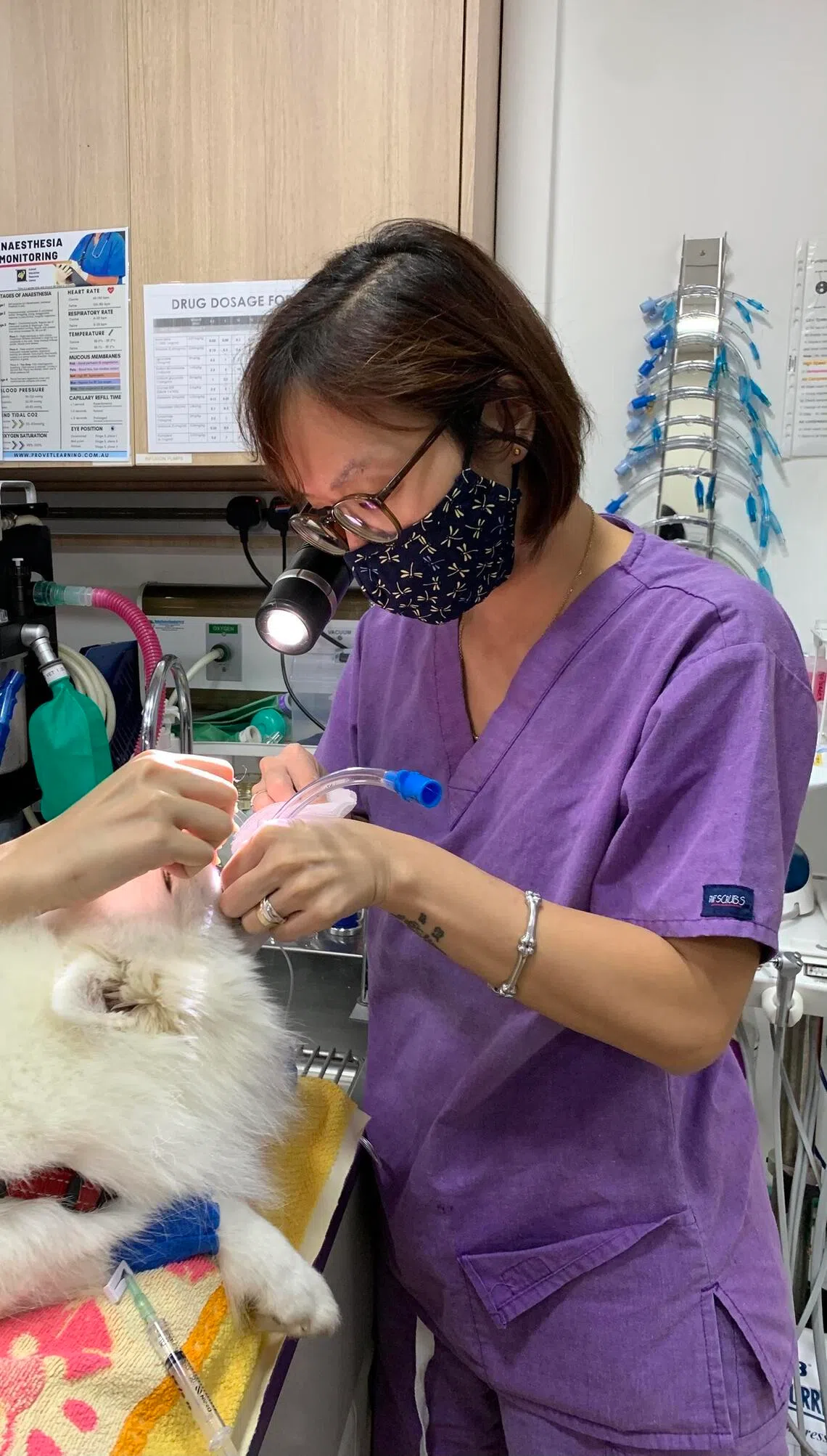Tips from a vet nurse: Small signs that could save your pet’s life
To celebrate World Vet Nurse Day, veteran veterinary nurse Evonne Yong shares how far the profession has come and, based on her decades of experience, gives tips to pet owners on early detection. The annual celebration, which honours vet nurses for their dedication to animal healthcare, falls on the second Friday of October, which was on Oct 10 in 2025.
Sign up now: Get ST's newsletters delivered to your inbox

Ms Evonne Yong is a senior veterinary nurse at McMaster & Heap Veterinary Practice in Christchurch, New Zealand.
PHOTOS: COURTESY OF EVONNE YONG
Evonne Yong
Follow topic:
When I began my career as a veterinary nurse over 20 years ago, I never could have imagined the extent of the changes I would witness in the profession now and in the ways we care for animals.
Veterinary nursing back then was a role still finding its place and we lacked local schools to support such programmes. Much of our work was focused on support and basic nursing tasks. Many pet owners thought of us simply as “assistants” in the background.
Over the years, the role of a vet nurse has expanded tremendously. It has evolved into a vital, respected part of veterinary medicine with greater clinical responsibility, deeper client education and stronger recognition of the critical role nurses play in animal welfare.
The journey has been both humbling and inspiring, and I have witnessed not only advances in veterinary medicine, but also changes in how people view and care for their pets.
Back then, we had fewer tools, fewer specialists to refer cases to and definitely fewer ways to detect diseases early.
Training has expanded to cover a wider range of specialities, including anaesthesia monitoring, emergency care and pain management, to name a few.
More pet owners are focusing on preventative healthcare, which is a positive sign. However, a common mistake I see is that pet owners may ignore small issues in their pets.
Many problems are subtle at first and because pets are so good at hiding discomfort, issues may go unnoticed until they are advanced with obvious symptoms.
Here are some early signs that pet owners should look out for.
1. Dental disease – the hidden pain
Dental problems are among the most overlooked yet common health issues in dogs and cats, typically ignored until advanced disease causes overt symptoms.
Pet owners tend to overlook this aspect of health as most animals may still be eating and behaving normally, until a vet check proves otherwise.
Also, pet owners assume bad breath – for example, “doggy breath” – is normal or fail to recognise signs of dental pain.
However, untreated dental disease can lead to infection, tooth loss, pain and systemic health risks, which include heart, kidney, and liver complications. Pet owners are recommended to take their pets for a dental check-up every six to 12 months.
2. Common toxicities – what pets should never eat
Another area I often see is accidental poisoning. Many owners do not realise that everyday foods or human medications can be toxic to pets.
Ingesting grapes, raisins, onions, chocolate, certain artificial sweeteners (like xylitol) and some plants and flowers, such as lilies, can be life-threatening. Even common human painkillers, like paracetamol or ibuprofen, are extremely dangerous for cats and dogs.
I have treated a cat whose kidneys almost failed from it being too close to a bouquet of lilies its owner had taken home. This case highlighted that the mere presence, and not necessarily the consumption of flowers, can be severely toxic.
It is essential to call your vet immediately if your pet eats something it should not. Do not wait for symptoms, as early treatment often makes all the difference.
3. Pet diabetes – more common than you think
Pet diabetes is more common than many people realise and affects dogs and cats. While the thought of giving daily insulin injections can be daunting at first, owners quickly gain the necessary confidence with professional support.
I once worked with a cat who lived for many years after diagnosis, thanks to its devoted owner who carefully managed its diet, medication and regular check-ups.

More pet owners are focusing on preventative healthcare, which is a positive sign.
PHOTO: COURTESY OF EVONNE YONG
Owners should be alert for symptoms such as drinking or urinating more often, and/or losing weight despite a normal appetite.
Looking back over two decades brings pride into my journey so far and optimism for the future. I am glad to have been a bridge between vets and pet owners.
Vet nurses can help make complex medical information more easy to understand, share advice with pet owners, demonstrate treatments and reassure them during difficult situations.
As more pet owners are putting their trust in us, it allows the role of vet nurses to grow with care, compassion and respect.
Ms Evonne Yong is a senior veterinary nurse at McMaster & Heap Veterinary Practice in Christchurch, New Zealand. She is also the co-founder of the Singapore Veterinary Nursing Technician Chapter, an initiative dedicated to education, collaboration and professional growth among veterinary nurses in Singapore.

